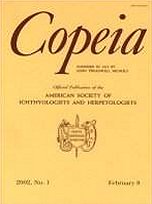Phrynosomatid lizards show considerable variation among species in the occurrence of a secondary sexual trait, blue abdominal coloration. The production of blue skin may be controlled by at least two cellular components, melanin in melanophores, and guanine in iridophores. To examine the hypothesis that a mechanism producing variation in abdominal coloration is variation in the presence of melanin in the melanophores within the dermal layer of skin, we used light microscopy to compare melanin density of five species of phrynosomatid lizards with ancestral and derived abdominal coloration. Our results show that the skin of adults with blue abdominal coloration has more dermal melanin than white skin regardless of species or sex. We experimentally tested this relationship by examining the dermal melanin in skin from female Sceloporus undulatus consobrinus with exogenously elevated levels of testosterone or 5α-dihydrotestosterone. These females displayed malelike abdominal coloration and malelike melanin density. Our results suggest that melanin density plays a role in the presence of blue abdominal coloration in these phrynosomatid lizards.
How to translate text using browser tools
1 December 2003
Positive Relationship between Abdominal Coloration and Dermal Melanin Density in Phrynosomatid Lizards
Vanessa S. Quinn,
Diana K. Hews
ACCESS THE FULL ARTICLE





